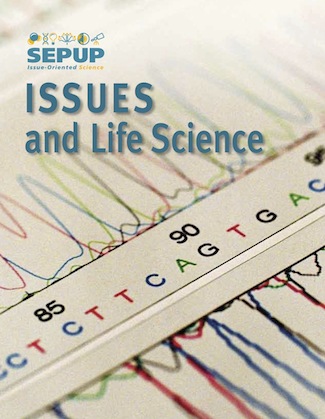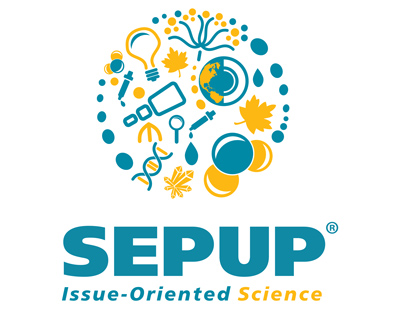Issues and Life Science, Second Edition

We’re constantly striving to enhance the way educators teach science and the way their students experience it. In keeping with that way of thinking, we’ve expanded, updated and improved our Science and Life Issues (SALI) course. We’ve also changed its name to Issues and Life Science (IALS), a title that is consistent with our other two books in the Middle School sequence: Issues and Earth Science and Issues and Physical Science. Rest assured, the newly named Issues and Life Science course is essentially the same as the original Science and Life Issues program, yet in many important ways it’s even better!
The enhancements SEPUP has made to Issues and Life Science include:
- Expanded literacy strategies integrated into activities in the following areas:
- Supporting reading comprehension
- Enhancing student writing
- Facilitating group discussion
- Concept and vocabulary development
- Enhanced and updated content to meet state and national standards and include recent scientific advances.
- Expanded teacher resource materials (including information on SEPUP’s approach, insights about implementing SEPUP, the new literacy strategies, working with diverse learners, and additional resources).
- Tools and strategies to differentiate instruction.
- Misconception alerts.
Sample Activity
Summary
Issues and Life Science, Second Edition is a standards based, issues-oriented science course that emphasizes the life/health sciences. The course can serve as a stand-alone, full-year program or as part of a three year integrated science with Issues and Physical Science, the SEPUP physical science course and Issues and Earth Science, SEPUP’s Earth Science course.
IALS has four process-oriented components:
- Scientific thinking
- Personal and societal decision-making
- Science and technology as professions
- Science as a predictive activity
The Issues and Life Science complete course contains 32 student books, a Teacher’s Guide and the complete materials package.
Description of Units:
A. Experimental Design: Studying People Scientifically
Student investigations address important ideas about the nature of science, the traditional scientific method and experimental design. At the end of the unit, they evaluate several proposed studies for the quality of their scientific design.
B. Body Works
Students explore the role of organ systems in providing nutrients and oxygen to the body and transporting and eliminating wastes (maintaining internal balance). The unit focuses in-depth on the cardio-pulmonary system as students investigate heart disease, nutrition and exercise.
C. Cell Biology and Disease
Students study microbiology; cell size, structure, function and permeability; and systems of classification. They explore the function of the immune system and the growth of antibiotic-resistant organisms. A project on disease develops research skills.
D. Genetics
Students explore fundamental principles of Mendelian genetics in pea plants and humans. They study asexual and sexual reproduction, the process of cell division, and the role of nature and nurture in determining traits. Near the end, students model the use of DNA technologies to solve real problems.
E. Ecology
Students consider what happens when a new species is introduced into an ecosystem as they model ecological relationships within an ecosystem; simulate the effect of competition, predation and other factors on population size; and investigate local ecosystems.
F. Evolution
Students consider whether an extinct species should be brought back to life as they examine fossils, consider the lines of evidence for evolution, natural selection, and the role of genetic mutations. Students evaluate the impact of humans on the extinction/evolution of species.
G. Bioengineering
Students consider how biotechnology can improve the lives of humans as they adapt to their external environment. Students construct, evaluate and revise their prototypes of tools and products as they explore the design process. The contributions of various individuals to the fields of science and biotechnology are presented and discussed.

